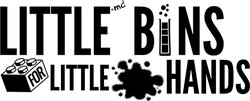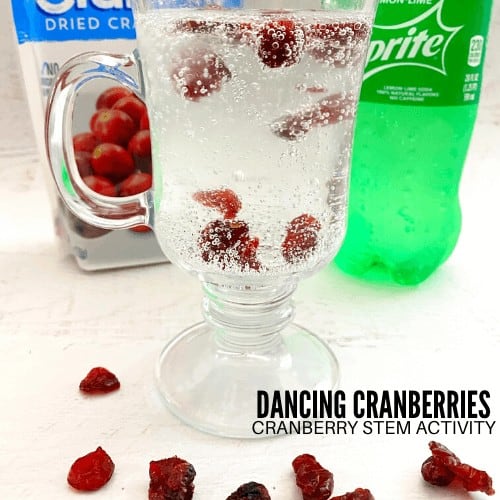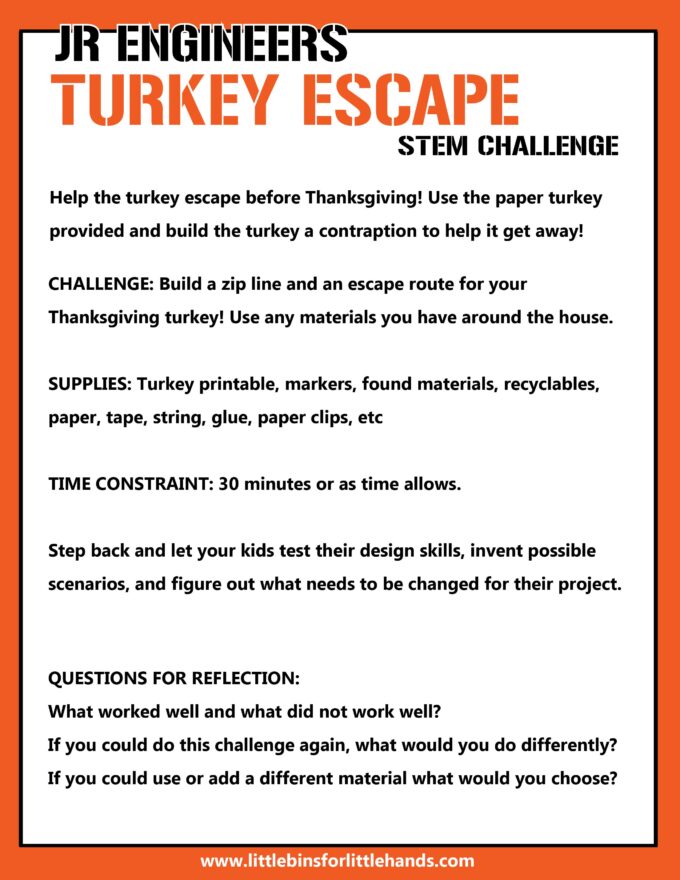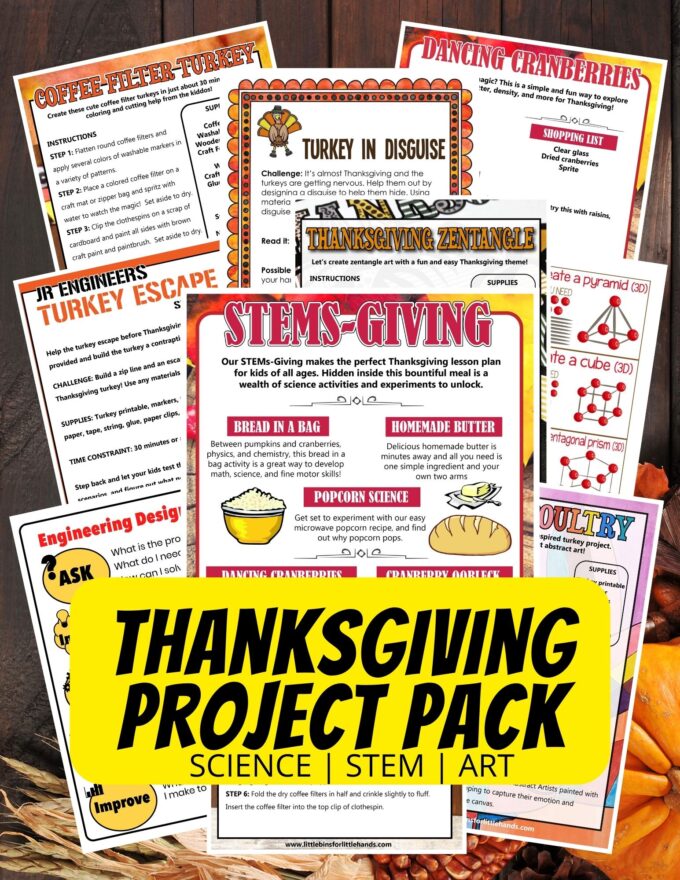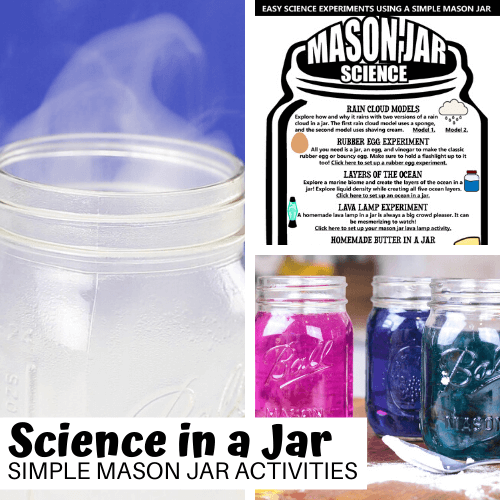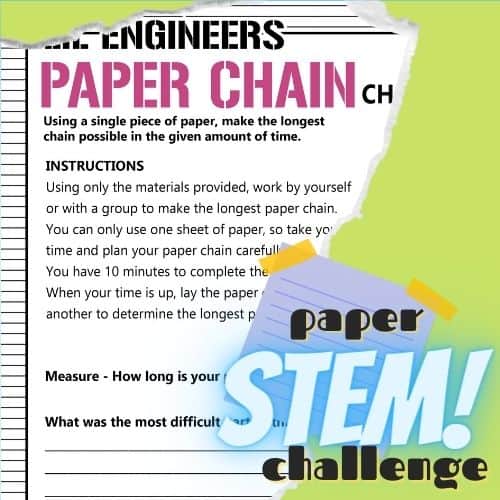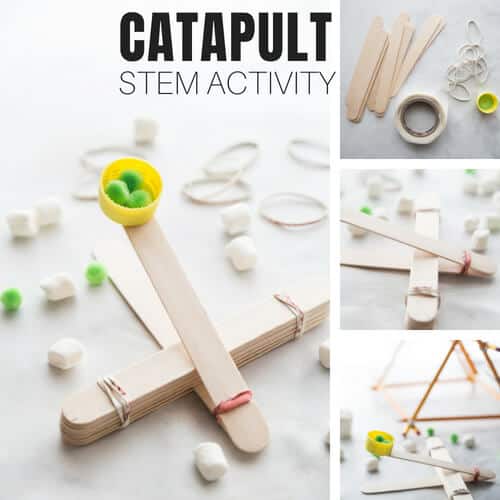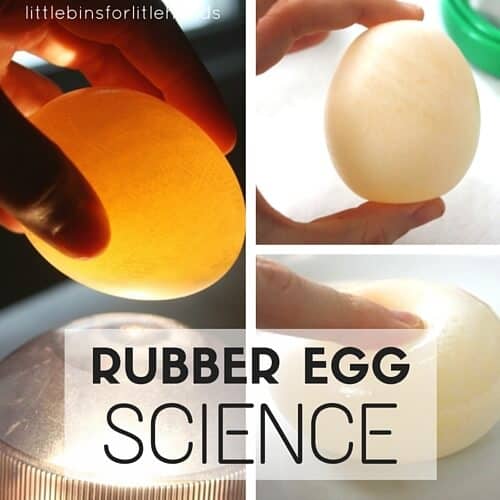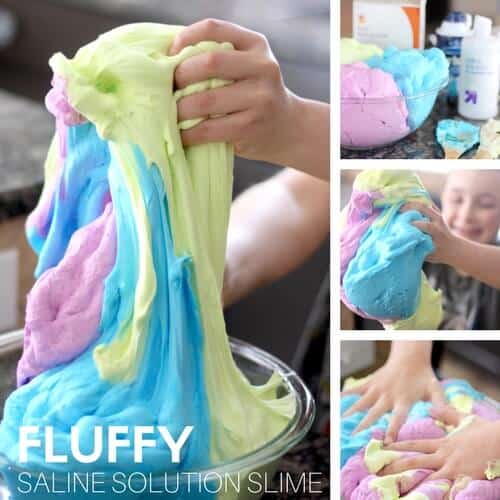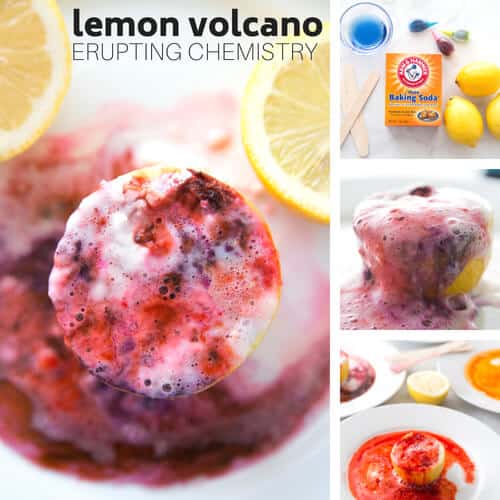Is it science or magic? This is a super simple and fun way to explore states of matter, density, and more for Thanksgiving! Usually, you see this activity with raisins, but you can easily mix it up with dried cranberries for the holiday season. There are two great ways to set up this Thanksgiving science experiment that both cause the dried cranberries to dance but use slightly different ingredients. Give your science activities a fun twist for Thanksgiving this year!
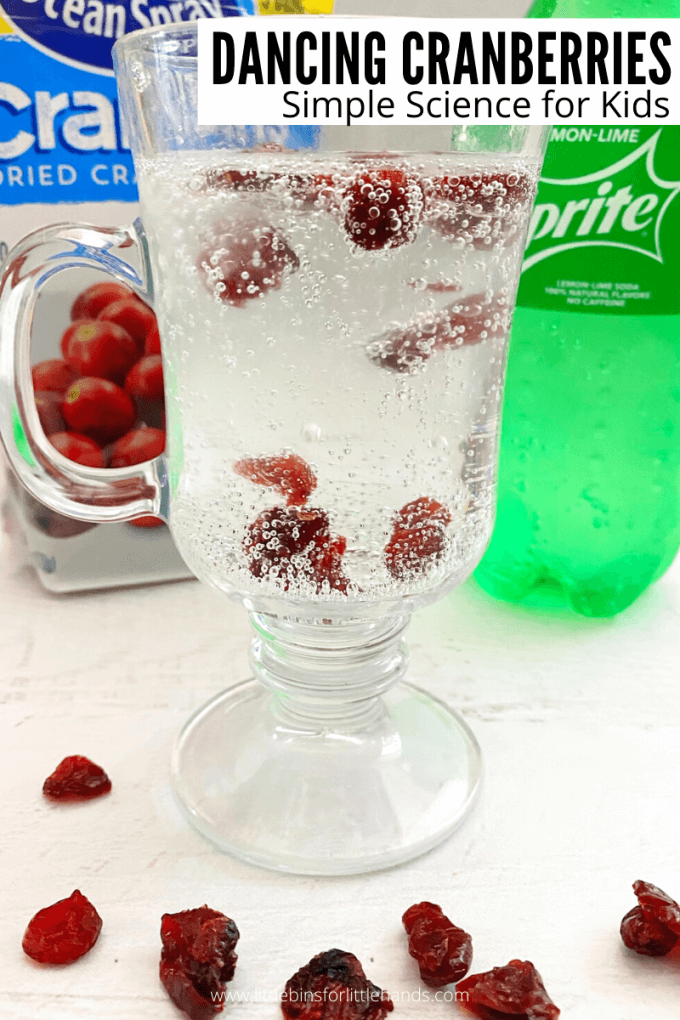
Enjoy Thanksgiving Theme Science Activities
Thanksgiving is the perfect time to experiment with pumpkins. apples and even cranberries! Our dancing cranberry experiment is an awesome example of simple chemistry and physics, and your kids will love this fune experiment just as much as adults!
We have a whole season of fun Thanksgiving science activities for you to try!
Holidays and seasons present numerous occasions for you to re-invent some of our classic science activities. This might look more like play than learning, but it’s so much more! All of our experiments are easy to set up and inexpensive for at home or in the classroom.
Can you make cranberries dance? You can even try this with raisins, grains of salt, and even popping corn. If you don’t have a soda, you can also use baking soda and vinegar seen here. This is a bit of a combo of physics and chemistry, but we are going to focus on the buoyancy part here!
What Is The Scientific Method For Kids?
The scientific method is a process or method of research. A problem is identified, information about the problem is gathered, a hypothesis or question is formulated from the information, and the hypothesis is tested with an experiment to prove or disprove its validity.
Sounds heavy… What in the world does that mean?!? It means you don’t need to try and solve the world’s biggest science questions! The scientific method is all about studying and learning things right around you.
As children develop practices that involve creating, gathering data evaluating, analyzing, and communicating, they can apply these critical thinking skills to any situation.
Note: The use of the best Science and Engineering Practices is also relevant to the topic of using the scientific method. Read more here and see if it fits your science planning needs.
Learn more here…
Helpful Science Resources To Get You Started
Here are a few resources that will help you introduce science more effectively to your kiddos or students and feel confident yourself when presenting materials. You’ll find helpful free printables throughout.
- Best Science Practices (as it relates to the scientific method)
- Science Vocabulary
- 8 Science Books for Kids
- All About Scientists
- Free Science Worksheets
- Science Supplies List
- Science Tools for Kids
- Join us in the Club
Get your FREE printable Thanksgiving science activities!
Dancing Cranberry Experiment
Supplies:
- Clear glass
- Dried cranberries
- Sprite
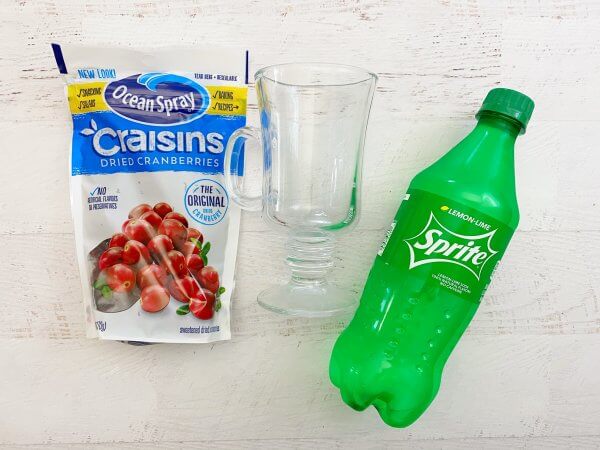
Instructions:
STEP 1. Fill the glass almost 3/4 full with soda.
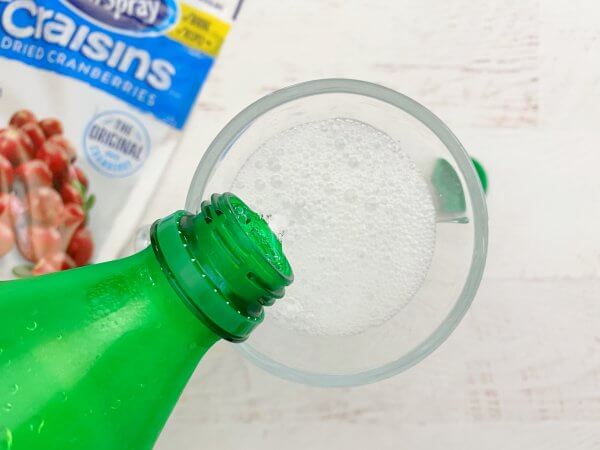
STEP 2. Add a small handful of dried cranberries to the Sprite.
STEP 3. Watch the cranberries drop to the bottom of the glass, float to the top and back down again for several minutes.
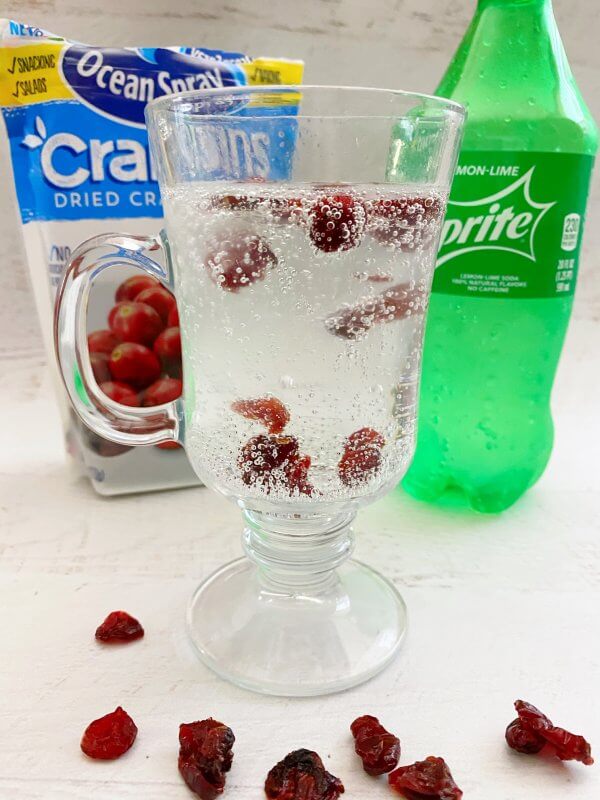
The Science of Dancing Cranberries
First, what is buoyancy? Buoyancy refers to the tendency of something to sink or float in a liquid like water. Can you change the buoyancy of something?
Yes, you can! Initially, you observed that the cranberries sunk to the bottom because they are heavier than the water. However, the soda has gas in it which you can see with the bubbles.
The bubbles attach themselves to the surface of the cranberry and lift it up! When the cranberry reaches the surface, the bubbles pop and the cranberry falls back down.
You do have to be a little patient at times to observe this happening! The bubbles are key to making the cranberries dance!
You can create your own gas with a baking soda and vinegar experiment that we tried here with our dancing corn experiment. It’s also quite fun to watch.
Can your kiddos identify the solid, liquid, and gas in this activity? What if you compare it to a glass of water? What happens when the cranberries are placed in only water?
Make it even more of an experiment with testing out different items like we mentioned above and compare the results. Do different types of soda work differently?
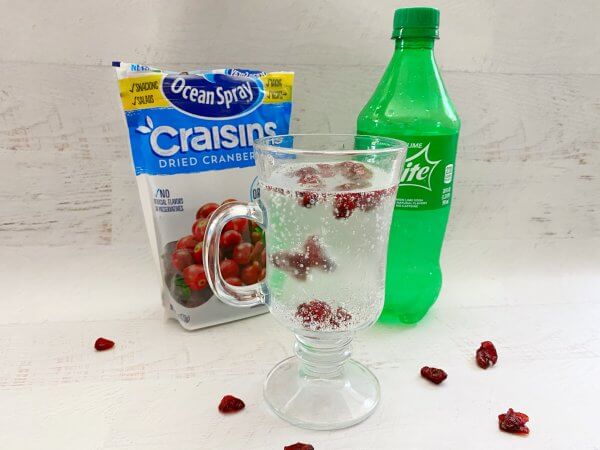
More Fun Thanksgiving Science Experiments to Try
Cranberries make an interesting theme for Thanksgiving science. Try one of these science experiments too.
- Cranberry Ooobleck Recipe
- Fizzing Cranberry Experiment
- Cranberry Juice Secret Messages
- Cranberry Structures
- Cranberry Activities
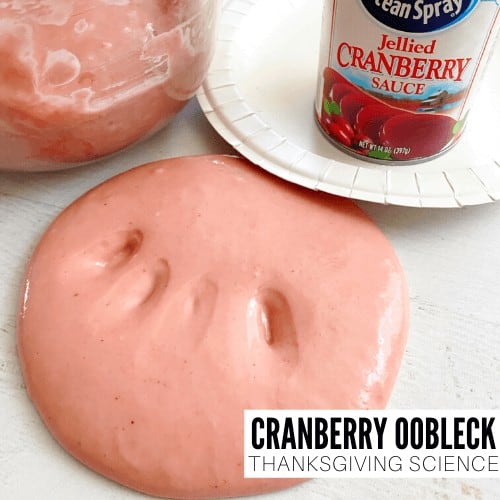
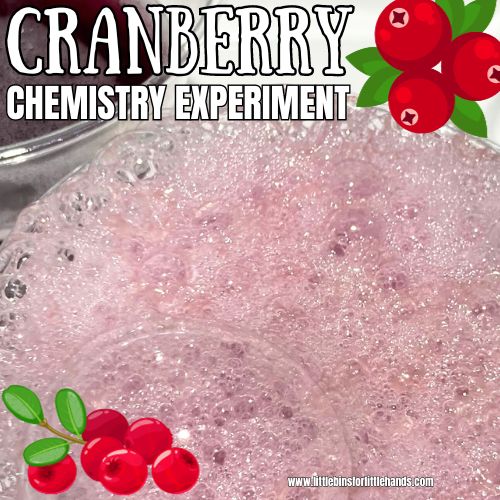
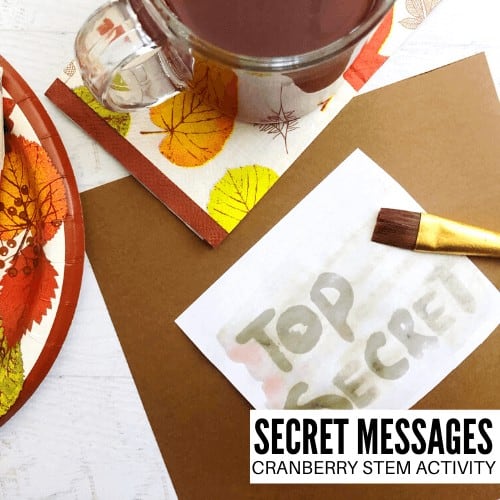
Bonus: Printable Turkey STEM Challenge
For a limited time, grab this Turkey Escape STEM Challenge as an instant download. For more instant downloads any time of the day, join us in the Library Club.
Printable Thanksgiving Project Pack
STEMS-Giving Pack! A full menu of Thanksgiving dinner science activities, secret codes, and more!
What’s Included:
- STEMS-Giving! A feast of science and STEM with simple experiments and projects for home or classroom!
- Even More Thanksgiving theme STEM activities with printable sheets, instructions, and useful information all using easy-to-source materials and perfect for limited time needs. Includes a Thanksgiving theme engineering pack with fun, problem-based challenges for kids to solve!
- Got STEAM? Try a turkey in a disguise challenge with writing prompts and more! Also color by code turkeys in disguise!
- Try your hand at building shapes with cranberry structure challenge cards.
- Discover Thanksgiving brick-building challenges perfect for early finishers, quiet time, hands-on math, or family time.
